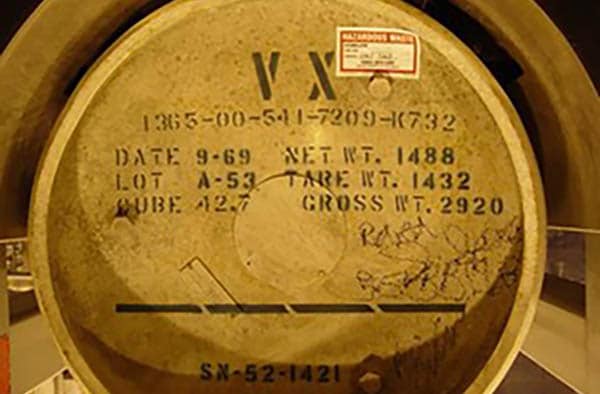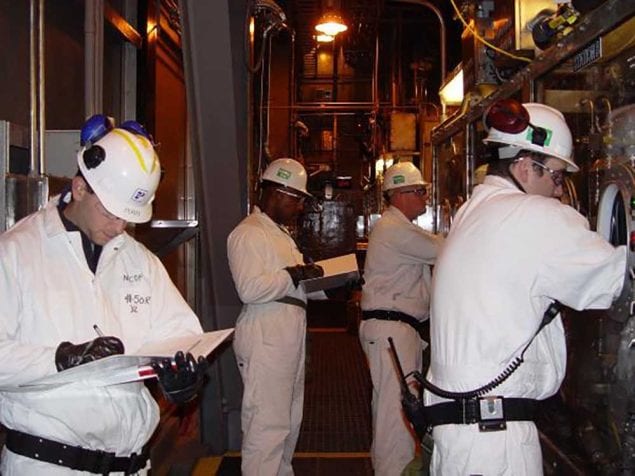CDC Assists in Eliminating Entire Nerve Agent VX Stockpile and its Threat to Public Health
The VX threat
In 1997, the United States approved the Chemical Weapons Convention, an international treaty to destroy all chemical weapons. This was a major task because the United States had multiple facilities that housed about 30,500 tons of chemical warfare weapons. Among these weapons, over 4,500 tons were VX, a human-made chemical warfare agent and one of the most toxic nerve agents. VX is 600 times more toxic than chlorine and one of the deadliest chemicals in existence. Exposure to large doses of VX in any way, like touching or getting it in your mouth or eyes, may result in numerous health problems that can possibly lead to death.


When chemical weapons like VX are left in storage for a long time, the threat to public health increases due to communities’ and the country’s potential exposure to toxic agents caused by the munitions degrading. Congress looked to HHS and CDC to make sure worker and public safety and health were protected during the destruction process. Because CDC’s Chemical Demilitarization Program has the resources, capabilities, and expertise, they led the public health oversight for the destruction of the entire U.S stockpile of nerve agent VX.
CDC helps ensure safe destruction of nerve agent VX stockpile
For the past 40 years, CDC has provided independent oversight to the U.S. chemical weapons destruction program. CDC helps ensure the safe destruction of chemical warfare material for protection of public health. Their responsibilities include monitoring air quality in and around the facilities, observing demonstrations of the destruction process, and reviewing potential safety concerns. The following list shows specific actions the program has taken to keep the public safe during the destruction of nerve agent VX:
- Partnering with agencies – Partnering with regional and state environmental protection agencies, health departments, and federal agencies, such as the Environmental Protection Agency (EPA), Federal Emergency Management Agency (FEMA), Department of Defense (DoD), and Army chemical agent destruction programs to share information on best practices
- Conducting safety reviews – Conducting on-site safety reviews of operational readiness, process safety, industrial hygiene, and medical clinics
- Developing criteria – Developing chemical agent air exposure limits with a margin of safety to protect workers and the nearby community; also preventing exposure by review of VX agent monitoring and quality assurance, personnel protective equipment, and air handling
- Participating in committees – Participating in the Chemical Demilitarization Citizens’ Advisory Commissions (CAC) to provide health-based resources to support state and local health professionals on chemical agent-related issues and the Chemical Stockpile Emergency Preparedness Program (CSPEPP)
Public health threat eliminated along with destruction of toxic chemicals
Not only was public and worker health protected, but also the VX stockpile elimination project was complete on April 19, 2022. CDC achieved its goal of destroying the chemical stockpile more than a year and a half earlier than expected. The goal was to destroy the chemical weapons stockpile by September 30, 2023. These efforts demonstrate the commitment of the United States to the destruction and elimination of the use of chemical weapons.